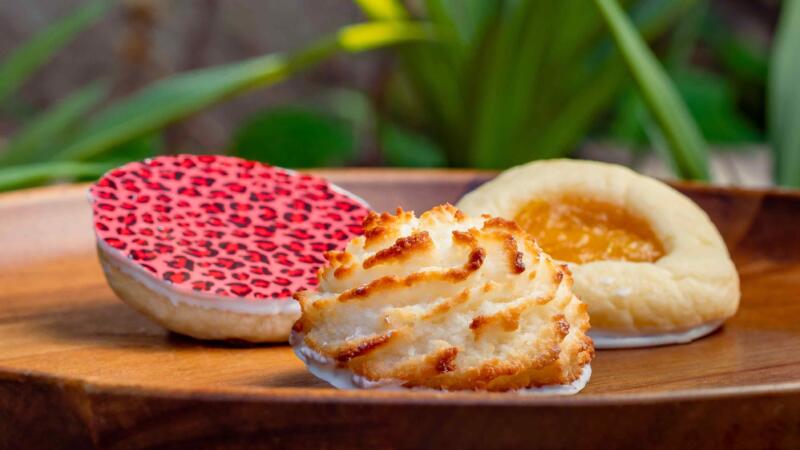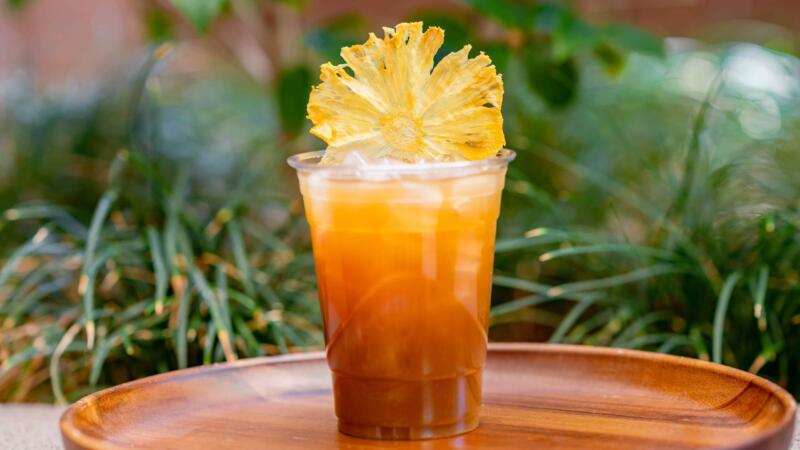Disney’s classic The Lion King is being told unlike ever before at the California theme park. In Tale of The Lion King, the story is told through a cast of actual storytellers as opposed to performers donned in animal-like or puppeteer costumes. Through song, music, dance, and colorful costumes, the beloved tale of Simba’s voyage back home to take back his land is evoked in a new way.
Natalie Willingham is a chef at the Disneyland resort and while she’s used to cooking daily and oftentimes catering events, it took a lot more for her to bring Tale of The Lion King from the stage to a plate. Through extensive research of the classic story and the region it’s set in, Willingham birthed a carefully curated menu via the Troubadour Tavern for attendees of the 30-minute production.
Guests will dine on perfectly seasoned curry chicken over kale and sweet potatoes yam with specialty non-alcoholic libations with infusions of sweet tea, lemon, and ginger that’ll surely be refreshing. There are also some sweets offered for those who need a cookie or two to take home.
Shadow and Act was invited to an exclusive preview of the show ahead of its May 28 debut at the Disneyland Park in Anaheim, CA. Following the show, members of the press were treated to an outdoor tasting room of Chef Natalie’s menu, and no one left hungry. We spoke with Chef Natalie about how she used the inspiration from the show for the menu.

S&A: What elements from the production of ‘The Lion King’ did you want to try to incorporate into the food?
NW: In all honesty, all of it. I wanted the food to match the story that was being told on the stage. So I did a lot of research just as far as what The Lion King is, the story of it, and then African food to go along with it – just to make sure that everything did mesh and go hand-in-hand.
In terms of the food, I eat Caribbean food daily, OK!? What inspired the curry chicken with the kale over the sweet potato? I've never seen it that way. It's delicious.
NW: It was kind of the region of Africa. So, it’s actually Malawian spices. Malawi is a region in Africa. We actually tried a bunch of different curries and different spices. We were using a Berber spice as well that you will see with Ethiopian cuisine and you can turn both of those into a curry. But we did prefer the Malawian. And with that, I just added a coconut chicken, kale, sweet potato, and all that. And it was just items that you will find in Africa. So again, it was based on the region, and how they were doing it. And then we did our own little twist on it.
How important is the food to the culture? You speak a little bit about how that correlates so that it brings the audience an understanding or experience of the entire production and the region.
NW: That’s kind of what we were hoping for. We want whoever does come, regardless of where they’re from, we want them to feel like they are in Africa, even if it is only for a few seconds. So we wanted to make sure that the flavors of the food told that story, the same story that’s being told from the stage.
And how are you catering to audiences with different food palates? What goes into that considering that so many people are vegan, gluten-free and have so many dietary restrictions?
NW: This is true. Thankfully, a lot of our items are very neutral. And again, if they ever have questions about our teams and chefs who are more than happy to see what you can and cannot have. We did try to use some items that are very natural. You will find a couple of things here and the allergens. But we did try to keep it very neutral. And again, being with Disney for so long, we kind of know what people are looking for and we tried to find that happy medium so that we’re not scaring anybody away, but that we’re so inviting and bringing them in.

